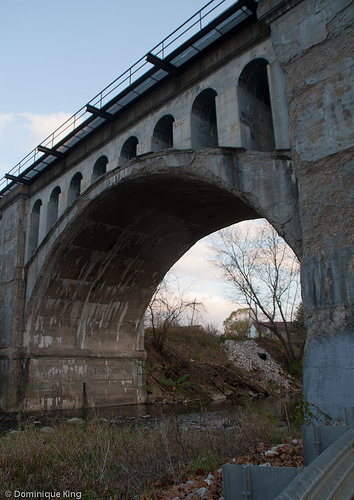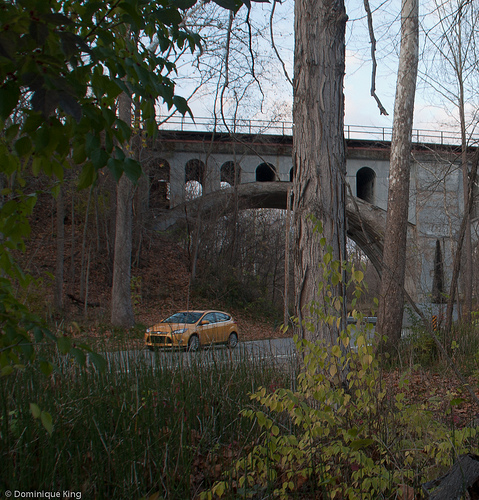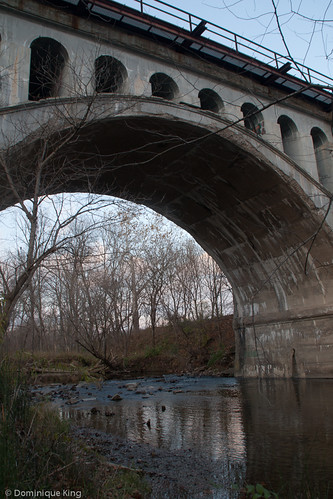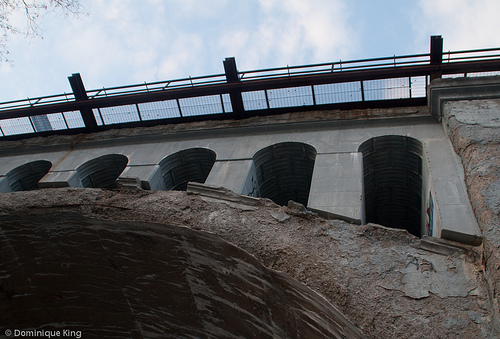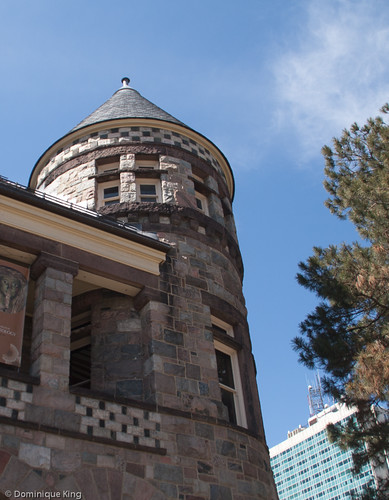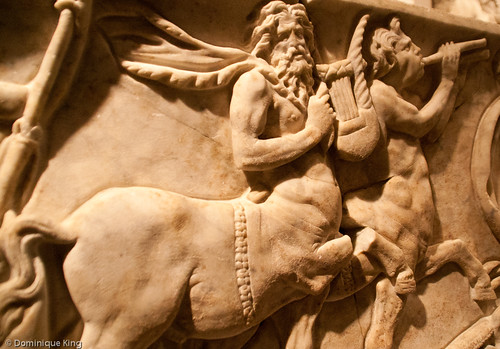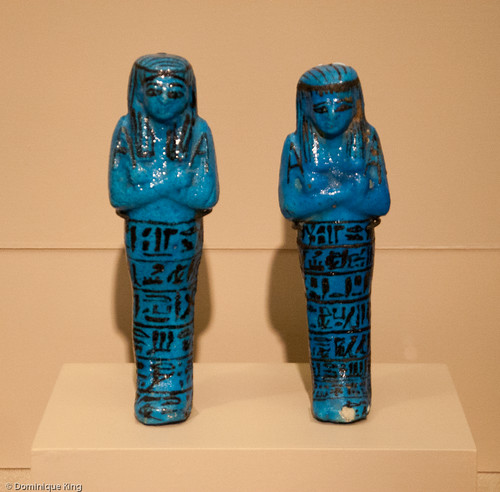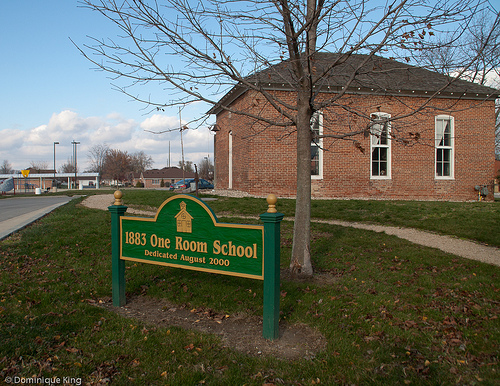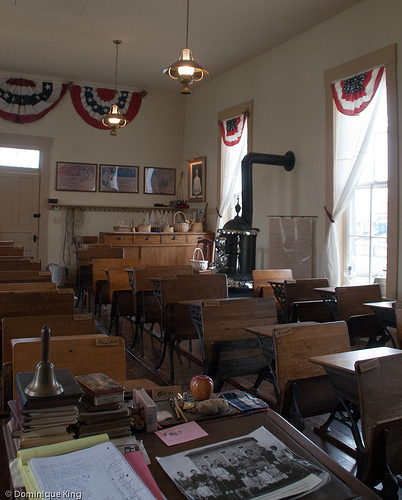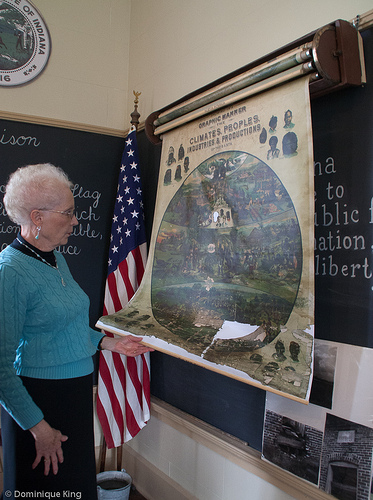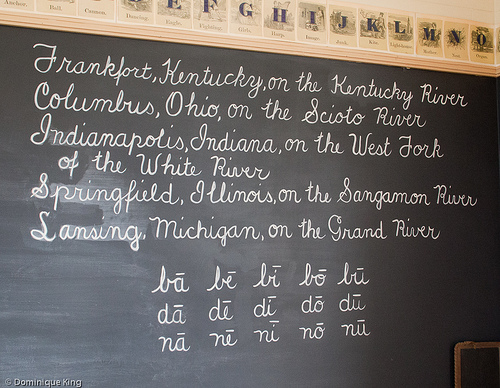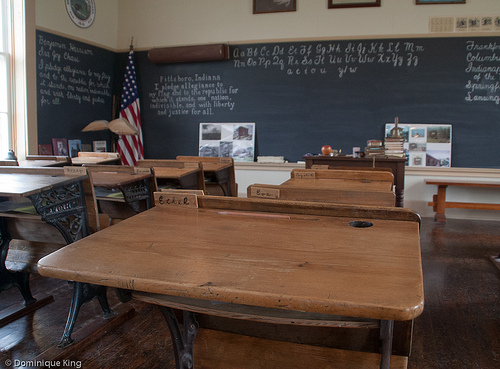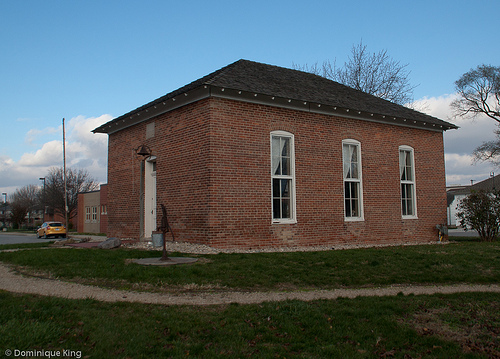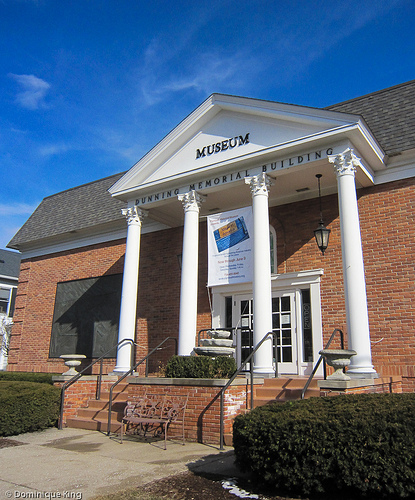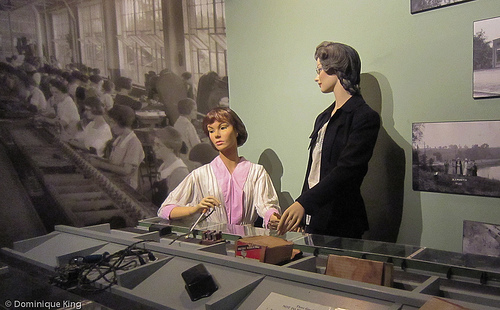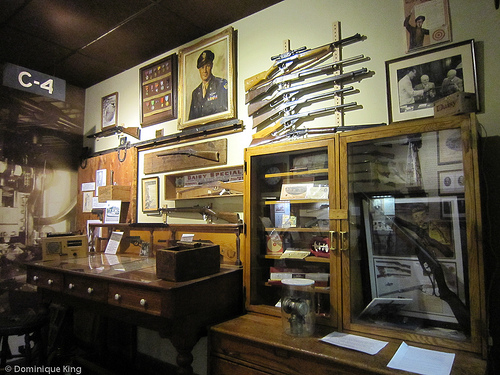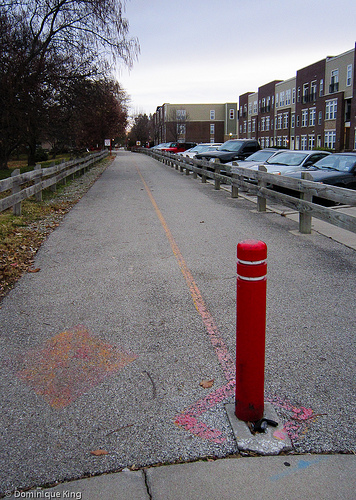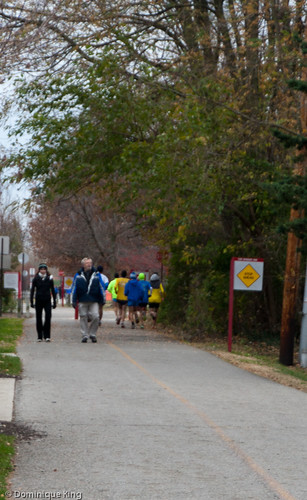It's dark. It's cold. It's rainy.
The terrain is unfamiliar, gunshots ring through the night, and
menacing figures unleash a fusillade of demands and insults at me as I kneel in
the mud.
It's 1836. I'm a runaway slave, and I'm following the North
Star in hopes of finding my freedom.
Public history institutions and publications downplayed or
simply ignored the subject of slavery for many years, but Conner Prairie, an
interactive history park near Indianapolis, stages its innovative and immersive
Follow the North Star program each
November and April to give participants a more personal look at the issue and
the questions it still raises today.
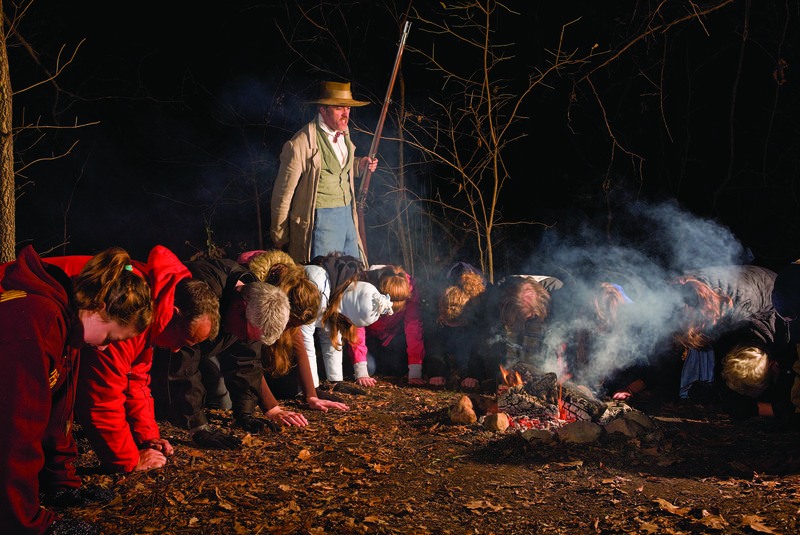
Photo: Courtesy of Conner Prairie
Historians at Conner Prairie warn visitors up front that their
acclaimed Follow the North Star program
is not for everyone.
We became part of the Follow
the North Star experience last November on a cold night after a rainy day
that left the trail in Conner Prairie's wooded area wet and muddy.
Our group filed into an auditorium, and a member of Conner
Prairie's staff gave us a quick preview of what to expect.
One woman nervously asked if she could just
"observe" the program after a warning that we might experience people
shouting at us and demanding that we follow orders. The staff member told "The
Observer" that we needed to follow instructions as a group throughout the
experience, but we could opt out of the direct verbal confrontations. The
staffer passed out white strips of cloth, telling us that if we felt the experience
got too intense, we could use the cloth as a headband so the re-enactors would
refrain from addressing us directly.
The mood grew somber as we silently boarded a trolley to
take us to the outdoor area where we would experience the program.
We arrived at our destination and walked a short distance
into the woods.
Suddenly, it was 1836 and it was on.
Our "master" immediately separated the group into
"bucks" and "breeders" (men and women), shouting demands
and insults the whole time.
We were lazy, dirty, thieving, and stupid. We were his
property. We were not to, under any circumstance, impair his ability to get top
dollar for us by being insolent or uncooperative.
We could not look a white person directly in the eye. We
were not to speak unless spoken to. We were to do as we were told, and to be
quick about it.
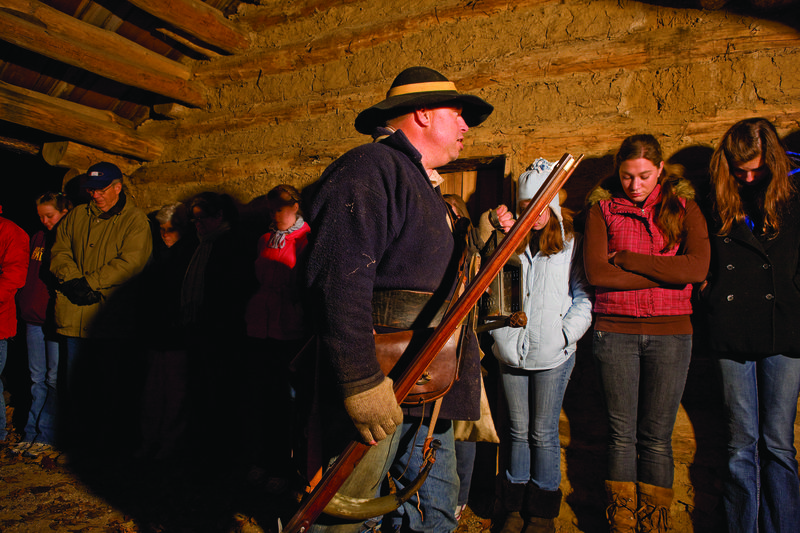
Photo: Courtesy of Conner Prairie
It mattered little if you didn't answer quickly enough,
didn't give the answers the questioners wanted to hear, or didn't answer at all.
The result was the same: more verbal abuse.
I felt an initial shock as I heard the volley of rapid-fire
insults and demands. I reminded myself that the re-enactors could not touch,
physically harm or kill me, but it was still difficult to escape the desire to
cry or flee.
I saw that "The Observer" and the three young women accompanying
her wasted no time in donning their white headbands. I quickly sidled away from
them and tried to keep my distance from them for the rest of the trip lest I become
the sole target of insults at any given time.
The slavers put us to work moving pieces of wood from one
pile to another as they insulted us, threatened us and loudly discussed what
they might do to us.
Suddenly, the slavers left us alone and someone frantically
whispered, "Let's go!"
The group quickly moved through the night and encountered
people who either helped or hindered our journey to our hoped-for freedom.

Photo: Courtesy of Conner Prairie
Our most unpleasant stop occurred as a couple of slave
catchers found us along the road. They berated and threatened us, blaming us
for causing them to lose their jobs. This resonated with me as I thought about the
fact that you hear many of the same sorts of arguments as an excuse for
discrimination against particular groups even today.
The slave catchers then told us to stay put as they threatened
to find a rope and hang us with it.
We
again slipped away into the night and the deep woods.
We
encountered a woman who had gained her freedom and she invited us to share the
warmth of her bonfire in the woods.
Most
of the group accepted the woman's story as true, but by now, I was feeling a
deep paranoia and didn't quite trust the woman in the woods.
We
followed the woman's instructions as we visited the home of a Quaker family. I
still felt distrustful and uncomfortable as the Quakers offered us a bit of
food and shelter as they directed us to our next stop. I didn't want to take
the food and wanted to quickly be on my way.
Our
journey came to an end as we encountered a fortune teller who told some of us
our fate.
Tim
learned that he escaped his owners, who recaptured and branded him before he finally
escaped for good on his second flight to freedom.
To
my great joy, I learned that I made it to freedom in Cass County, Michigan,
where I lived the rest of my life.
We met
with a staff member back at Conner Prairie's main building for a debriefing
session.
During
the session, I learned that my distrust in the woman in the woods wasn't necessarily simply
paranoia as some African Americans, for the sake of their own survival, lured
runaways into trusting them before turning them in to slave catchers.
The
whole 90-minute experience left me emotionally and physically spent. It is especially
sobering to realize that fugitive slaves spent months, or even years, on the
run and that there were no guarantees that the journey would not end in
death...or worse.
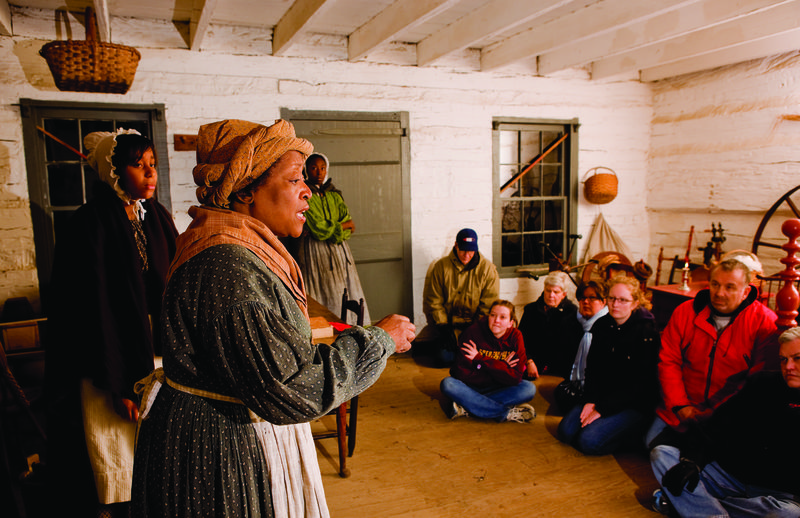
Photo: Courtesy of Conner Prairie
Conner
Prairie began offering Follow the North
Star in the late 1990s, drawing some 60,000 participants in the program
over the years. It represents some of the shift in dealing with the subject of
slavery in public history in recent years, but it's still a relatively rare way
of addressing the subject in public history institutions.
Conner
Prairie's Follow the North Star
program runs on select weekends each April and November. Reservations are required and participants
must be 12 or older. The program is definitely not appropriate for younger
children, and I would suggest that participants be prepared to fully participate
in order to get the most benefit from the experience. Admission is $20.
The
Discomfort Zone: Reenacting Slavery at Conner Prairie from the Organization of
American Historians' OAH Magazine of History has a short history of the Follow the North Star program, examples
of other efforts to deal with emotionally-charged topics at public institutions,
and discussion of the pros and cons of such approaches.
Check
out Fleeing for Freedom: Stories of the Underground Railroad as Told by Levi
Coffin and William Still, edited by Willene Hendrick and George Hendrick. Levi
Coffin, who we encountered as part of the Quaker family that helped us during
our Follow the North Star experience,
was extremely important in the Underground Railroad network in Indiana and Ohio.
We also heard the story of his Underground Railroad activity in Cincinnati when
we visited the National Underground Railroad Freedom Center a few years ago.
Thanks to the Hamilton County Convention and Visitors Bureau
for sponsoring my visit to Hamilton County, providing lodging, meals
and a tour of Hamilton County attractions for my review during my recent
visit there, with no further compensation. I was free to express my own
opinions about the stay and experiences, and the opinions expressed
here are mine.
© Dominique King 2013 All rights reserved


